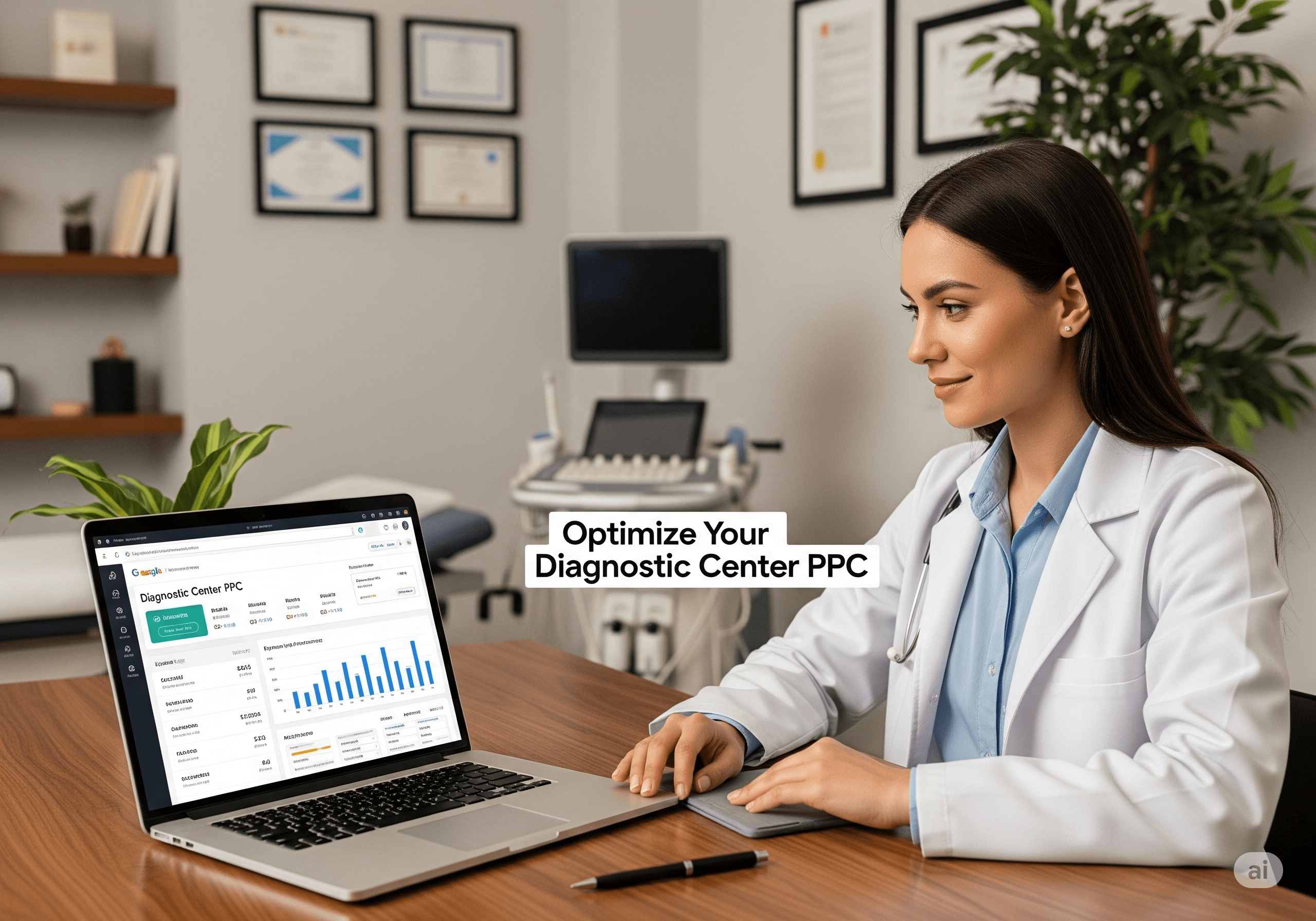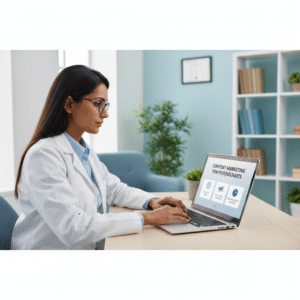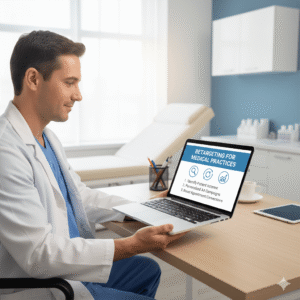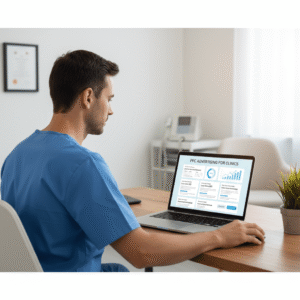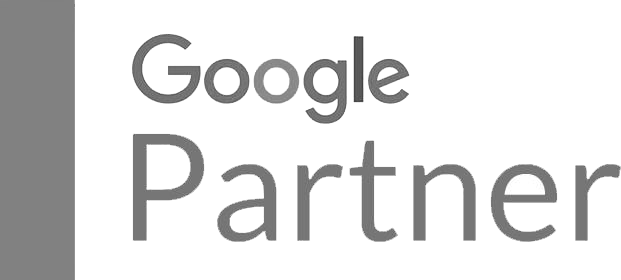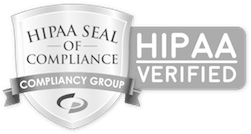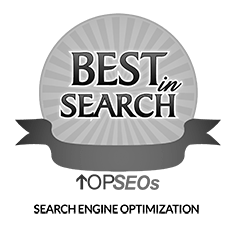“Drive bookings for your diagnostic center with Diagnostic Center PPC ads, a targeted and measurable strategy for connecting with patients actively seeking your services online.”
In today’s digital-first world, patients increasingly turn to the internet to find healthcare services. This shift presents a massive opportunity for diagnostic centers to connect with individuals actively seeking everything from routine blood tests to advanced imaging scans. But with so many voices online, how do you ensure your center is the one they find? The answer lies in a powerful and precise tool: pay-per-click (PPC) advertising.
PPC, particularly through platforms like Google Ads, allows you to place your diagnostic center directly in front of potential patients when they search for your services. It’s not about casting a wide, hopeful net. Instead, it’s about strategic, targeted advertising that delivers measurable results. This is a game-changer for diagnostic centers looking to increase patient bookings, drive inquiries, and ultimately grow their business.
This article will serve as your comprehensive guide to the world of diagnostic center PPC. We’ll move beyond the jargon and dive deep into actionable strategies. You’ll learn the ins and outs of ad targeting, keyword selection, budget allocation, and the often-overlooked art of landing page optimization. We’ll also cover the critical aspect of conversion tracking, so you know exactly what’s working and what’s not. By the end, you’ll have a clear roadmap for launching and managing PPC campaigns that maximize your return on investment (ROI).
The Power of PPC: Why It’s a Must-Have for Diagnostic Centers
Let’s break down why PPC advertising is so effective for diagnostic clinics. Imagine a potential patient, “John,” experiencing persistent back pain. His doctor recommends an MRI. What’s John’s next move? He’ll likely pull out his phone and search for something like “MRI scan near me” or “best diagnostic center for MRI in [his city].”
This is where the magic of PPC happens. With a well-executed campaign, your diagnostic center’s ad can appear at the top of John’s search results. This isn’t just a random ad; it directly answers his immediate need. He’s not casually browsing; he intends to find and book a service. By being there at that moment, you’ve already surpassed competitors who rely solely on organic search rankings, which can take months or even years to build.
PPC offers immediate visibility. Unlike Search Engine Optimization (SEO), a long-term strategy, PPC campaigns can start driving traffic and leads almost instantly. This is crucial in the fast-paced healthcare market. Furthermore, the level of targeting is unparalleled. You can target users based on their location, the specific keywords they use, their age, and more. This means you’re not wasting your advertising budget on people unlikely to become patients. You’re speaking directly to your ideal audience.
Keyword Research: The Bedrock of Your PPC Success
Use keywords to bridge a potential patient’s needs and your diagnostic center’s services. Choosing the right keywords is the most critical factor in the success of your PPC campaigns. Get this right, and you’re on your way to a steady stream of qualified leads. Get it wrong, and you’ll burn through your budget with little to show.
So, how do you find the right keywords? It starts with putting yourself in the shoes of your potential patients. What terms would they use to search for your services? Let’s explore the different types of keywords you should be targeting.
Service-Specific Keywords
These are the most common and often the most effective keywords. They relate directly to the services you offer. Examples include:
- “MRI scan”
- “CT scan services”
- “ultrasound clinic”
- “blood test lab near me”
- “X-ray services”
- “mammogram screening”
- “cardiac stress test”
When searching for these terms, users typically intend to book an appointment. Your ads should be tailored to these services, highlighting benefits like advanced technology, quick appointments, and experienced staff.
Location-Based Keywords
For a brick-and-mortar business like a diagnostic center, location is everything. You need to attract physically close patients to visit your facility. Location-based keywords are essential for this. They combine your services with a specific geographic area. Examples include:
- “diagnostic center in [City Name]”
- “[Neighborhood] imaging services”
- “blood test lab in [ZIP Code]”
- “best MRI scan near [Landmark]”
By targeting these keywords, you ensure that your ads are shown to people in your service area, dramatically increasing the likelihood of them becoming patients.
Symptom-Based Keywords
This is a slightly more advanced but highly effective strategy. Sometimes, potential patients don’t know what specific test they need. They just know their symptoms. You can reach them earlier in their journey by targeting keywords related to these symptoms. Examples include:
- “causes of chronic headaches”
- “tests for persistent cough”
- “reasons for lower back pain”
- “What does chest pain mean?”
Your ad and landing page should be more informational for these keywords. You could direct them to a blog post about the possible causes of their symptoms and then suggest the relevant diagnostic tests. This would position your center as a helpful, authoritative resource.
Branded Keywords
These are keywords that include your diagnostic center’s name. For example, “[Your Diagnostic Center Name] appointments” or “[Your Diagnostic Center Name] locations.” While you might rank organically for your name, bidding on these keywords is still a good idea. It lets you control the messaging and ensures competitors aren’t bidding on your name and stealing potential patients.
Negative Keywords: Just as Important
Negative keywords are the terms you don’t want your ads to appear for. Adding negative keywords to your campaigns is crucial for avoiding wasted ad spend. For example, if you’re a diagnostic center, you’ll want to add negative keywords like “free,” “at-home,” or “jobs.” This prevents your ads from appearing in searches irrelevant to your business.
Crafting Ad Copy That Converts
Once you’ve got your keywords, the next step is to write compelling ad copy. Your ad is your first impression, so it needs to be powerful. It should be clear, concise, and patient-centric. It needs to grab attention and persuade the user to click. Here’s how to break down the components of a winning ad.
The Headline: Your First and Only Chance to Grab Attention
The headline is the most prominent part of your ad. It needs to be directly relevant to the user’s search query. If someone searches for “MRI scan near me,” a good headline would be “MRI Scans Available Near You” or “Book Your MRI Scan Today.” Use your primary keyword in the headline to show the user that your ad perfectly matches their needs.
The Description: Highlight Your Unique Selling Points
In the description, you can elaborate on why a patient should choose your center. Focus on the benefits. Do you offer same-day appointments? Do you have the latest, most advanced equipment? Are your radiologists board-certified? Do you have evening or weekend hours? These are the details that can set you apart from the competition. Use strong, active language and focus on what matters most to the patient.
The Call to Action (CTA): Tell Them What to Do Next
A strong call to action is essential. Don’t leave the user guessing what to do next. Tell them precisely what you want them to do. Use action-oriented phrases like:
- “Book Your Appointment Online”
- “Call Now for a Consultation”
- “Find a Location Near You”
- “Get Your Results Fast”
A clear CTA can significantly increase your click-through rate (CTR) and conversions.
Ad Extensions: More Space, More Information
Ad extensions are a free and easy way to make your ads more prominent and informative. They add extra information to your ad, giving users more reasons to click. Some of the most valuable ad extensions for diagnostic centers include:
- Sitelink Extensions: These add extra links to your ad that direct users to specific pages on your website, like your services page, locations page, or patient testimonials page.
- Call Extensions: This adds your phone number directly to your ad, making it easy for users on mobile devices to call you with a single tap.
- Location Extensions: This displays your address, a map to your location, and your business hours. It’s a must-have for attracting local patients.
- Structured Snippet Extensions: These allow you to highlight specific aspects of your services, such as the types of tests you offer (e.g., “Services: MRI, CT Scan, Ultrasound, X-Ray”).
- Callout Extensions are short, impactful phrases that highlight key benefits, such as “Board-Certified Radiologists,” “Same-Day Results,” or “Insurance Accepted.”
Ad extensions can increase your ad’s visibility, improve your CTR, and provide a better user experience.
Targeting: Reaching the Right People in the Right Place
Effective PPC advertising is all about precision targeting. You want to ensure your ads are seen by the people most likely to become your patients. Here are some of the targeting options you should be using.
Geographic Targeting: Zeroing In on Your Service Area
This is the most fundamental targeting option for a local business. You can target your ads to countries, regions, cities, and ZIP codes. You can also use radius targeting to show your ads to people within a certain distance of your diagnostic center. This ensures you’re not wasting money advertising to people too far away to visit.
Demographic Targeting: Understanding Your Patient Profile
Google Ads allows you to target users based on age, gender, and parental status. This can be useful if you know that certain demographics are more likely to need specific services. For example, you might target women of a certain age for mammogram screenings. However, it’s essential to be mindful of healthcare advertising regulations and avoid discriminatory targeting.
Remarketing: Bringing Back Interested Visitors
Remarketing (or retargeting) is one of the most powerful strategies in PPC. It allows you to show ads to people who have visited your website. These are warm leads. They are already familiar with your brand and have shown some interest in your services. You can stay top-of-mind by showing them targeted ads as they browse other websites and encourage them to return and book an appointment.
Budgeting and Bidding: Making Every Penny Count
One of the most common questions about PPC is, “How much should I spend?” The answer depends on your goals, your market, and your competition. The good news is that PPC is highly scalable. You can start with a small budget and increase it as you see positive results.
Bidding Strategies: How to Pay for Clicks
There are several bidding strategies you can use in Google Ads. Here are a few of the most common:
- Manual CPC (Cost-Per-Click): This option gives you the most control. You set a maximum amount you’re willing to pay for each click. It’s a good option when you’re just starting and want to get a feel for how many clicks cost in your industry.
- Maximize Clicks: With this automated strategy, Google will try to get you as many clicks as possible within your budget. This can be a good option if your primary goal is to drive traffic to your website.
- Maximize Conversions: This strategy tells Google to get you the most conversions (e.g., appointments booked, forms filled out) for your budget. This is a more advanced strategy that requires you to have conversion tracking set up correctly.
- Target CPA (Cost-Per-Acquisition): With this strategy, you set a target amount you’re willing to pay for each conversion, and Google will try to get you as many conversions as possible at that price.
The right bidding strategy for you will depend on your specific goals and your level of experience with PPC.
Landing Page Optimization: The Final Step to Conversion
Your ad gets the click, but your landing page gets the conversion. You can have the best ad in the world, but if it leads to a confusing or poorly designed landing page, you’ll lose that potential patient. Your landing page needs to be a seamless extension of your ad, providing a clear and easy path to conversion.
Here are the essential elements of a high-converting landing page for a diagnostic center:
- Clear and Compelling Headline: The headline on your landing page should match the headline of your ad. This reassures the user that they are in the right place.
- Engaging and Informative Content: Your landing page should provide all the information a patient needs to decide. This includes details about the specific service, your technology, and the patient’s expectations. Use bullet points, short paragraphs, and clear headings to make the content easy to scan.
- A Single, Strong Call to Action (CTA): Your landing page should have one primary goal, whether it’s to book an appointment, fill out a contact form, or call your center. Your CTA should be prominent and easy to find. Use a contrasting color for your CTA button to make it stand out.
- User-Friendly and Mobile-First Design: Most local searches happen on mobile devices. Your landing page must be fully responsive and easy to use on a small screen. It should also load quickly. A slow-loading page is a sure way to lose a potential patient.
- Trust Signals: In healthcare, trust is everything. Your landing page should include trust signals to build credibility and reassure patients. These can include:
- Patient testimonials and reviews
- Certifications and accreditations
- Photos of your facility and staff
- Logos of insurance providers you accept
- Simple and Visible Contact Information: Make it as easy as possible for patients to contact you. Your phone number should be prominently displayed at the top of the page. Include a simple contact form that only asks for the essential information.
Tracking and Measurement: The Key to Continuous Improvement
The beauty of digital marketing is that everything is measurable. You need to be tracking your PPC campaigns to understand what’s working and what’s not. This data is essential for optimizing your campaigns and maximizing your ROI.
Here are the key metrics you should be tracking:
- Clicks: The number of times your ad has been clicked.
- Impressions: The number of times your ad has been shown.
- Click-Through Rate (CTR): The percentage of impressions that result in a click. A high CTR indicates that your ad is relevant and compelling.
- Conversions: This is the most critical metric. A conversion is a desired action taken by a user, such as booking an appointment, filling out a form, or making a phone call.
- Cost-Per-Conversion (or Cost-Per-Acquisition): This is the total cost of your campaign divided by the number of conversions. This tells you how much you’re paying for each new patient.
- Conversion Rate: The percentage of clicks that result in a conversion. A high conversion rate means your landing page effectively turns visitors into patients.
Regularly monitoring these metrics lets you make data-driven decisions to improve your campaigns. You can test different ad copy, experiment with other keywords, and optimize your landing pages to improve your results continuously.
Navigating Healthcare Advertising Regulations
It’s important to remember that healthcare is a heavily regulated industry. When running PPC ads for a diagnostic center, you must know and comply with all relevant regulations, including the Health Insurance Portability and Accountability Act (HIPAA) and Google’s healthcare advertising policies.
This means you can’t use remarketing for certain sensitive health conditions, and you need to be careful about the language you use in your communications. It’s always a good idea to work with a marketing agency with experience in the healthcare industry and an understanding of these regulations.
Your Partner in Growth: Introducing InvigoMedia
As you can see, a successful PPC campaign for a diagnostic center involves many moving parts. From in-depth keyword research to compelling ad copy, precise targeting, and meticulous tracking, it requires significant time, expertise, and continuous effort. This is where a specialized digital marketing agency can be an invaluable partner.
InvigoMedia is a trusted medical digital marketing agency with a proven track record helping diagnostic and healthcare businesses grow. We understand the unique challenges and opportunities of the healthcare industry. Our team of PPC experts specializes in creating and managing campaigns compliant with all regulations and designed to deliver a high return on investment.
We go beyond just managing your ads. We take a comprehensive approach to digital marketing, from optimizing your website for conversions to implementing advanced tracking and analytics. We believe in data-driven strategies and transparent communication. With InvigoMedia, you’ll have a dedicated partner committed to helping you achieve your business goals.
If you’re ready to harness the power of PPC to drive more bookings and grow your diagnostic center, we invite you to contact us today. Let’s discuss your goals and how we can help you achieve them.
Conclusion: Your Path to a Thriving Practice
In the competitive world of healthcare, standing still is not an option. Diagnostic centers that embrace the power of digital marketing will thrive in the years to come. PPC advertising offers a direct and consequential way to connect with patients seeking your services. It’s a targeted, measurable, and scalable strategy that can deliver a significant return on investment.
By focusing on in-depth keyword research, crafting compelling ad copy, optimizing your landing pages, and meticulously tracking your results, you can build a PPC machine that consistently drives new patient bookings and grows your practice. And with a trusted partner like InvigoMedia by your side, you can navigate the complexities of digital marketing with confidence, knowing that your campaigns are in expert hands. The future of your diagnostic center’s growth is just a click away.
Frequently Asked Questions (FAQs)
Q1: How much do I need to spend on PPC for my diagnostic center?
A1: The ideal budget depends on several factors, including your location, the services you want to promote, and the level of competition. The good news is that PPC is flexible. You can start with a modest budget and scale up as you see results. A good starting point is to determine the lifetime value of a patient and then decide how much you are willing to spend to acquire a new one.
Q2: How long does it take to see results from PPC?
A2: One of the most significant advantages of PPC is the speed at which it can deliver results. Unlike SEO, which can take months to show an impact, you can start seeing traffic and leads from your PPC campaigns within days of launching them. However, optimizing your campaigns for the best possible ROI is ongoing.
Q3: Can I run PPC campaigns, or need to hire an agency?
A3: While managing your PPC campaigns is possible, it can be a steep learning curve. The world of PPC is constantly evolving, requiring significant time and expertise to stay on top of the latest best practices. Hiring a specialized agency like InvigoMedia can save you time, prevent costly mistakes, and ultimately deliver better results.
Q4: What is a reasonable click-through rate (CTR) for a diagnostic center?
A4: A “good” CTR can vary depending on the platform, the keywords you’re targeting, and the quality of your ad copy. However, a 3-5% CTR in the healthcare industry on the Google Search Network is quite good. The key is to focus on continuous improvement by testing and refining your ads.
Q5: How are my PPC campaigns working?
A5: The key is to have proper conversion tracking set up. This allows you to see exactly how many people who clicked on your ad went on to book an appointment, fill out a contact form, or call your center. Calculate cost-per-acquisition (CPA) and overall return on investment (ROI). By tracking these conversions

